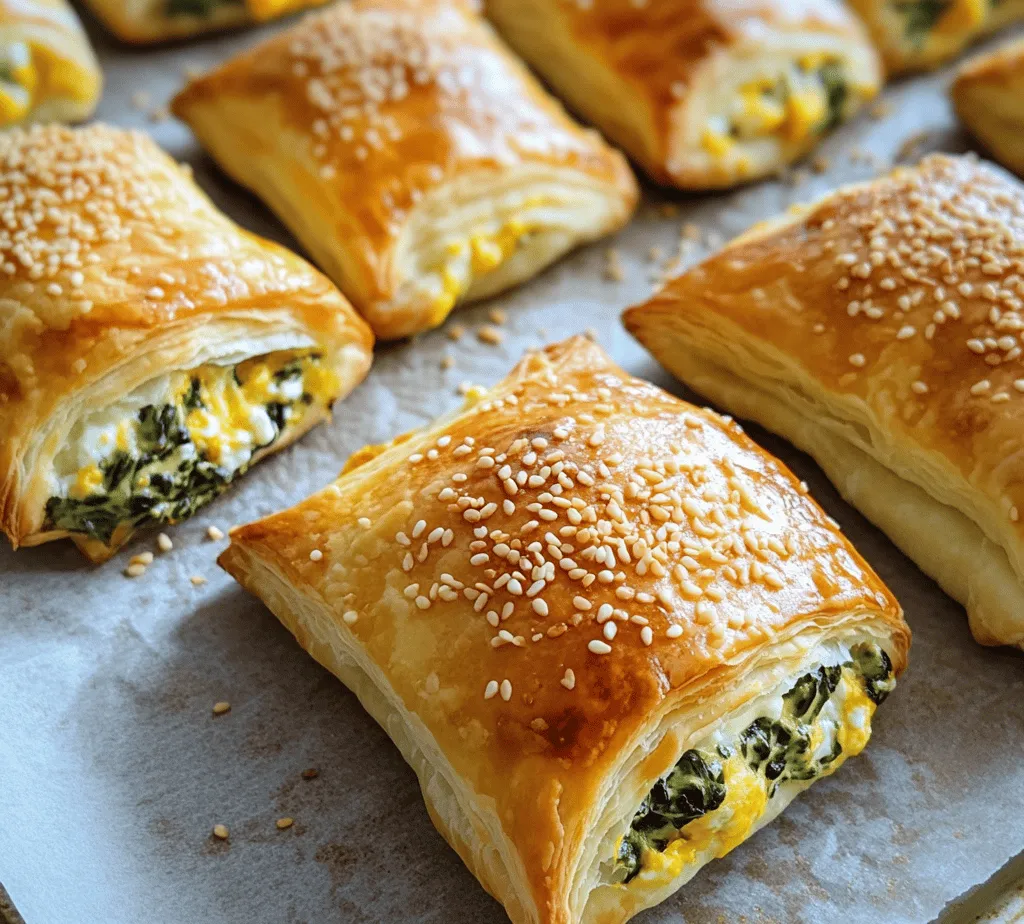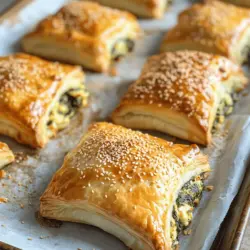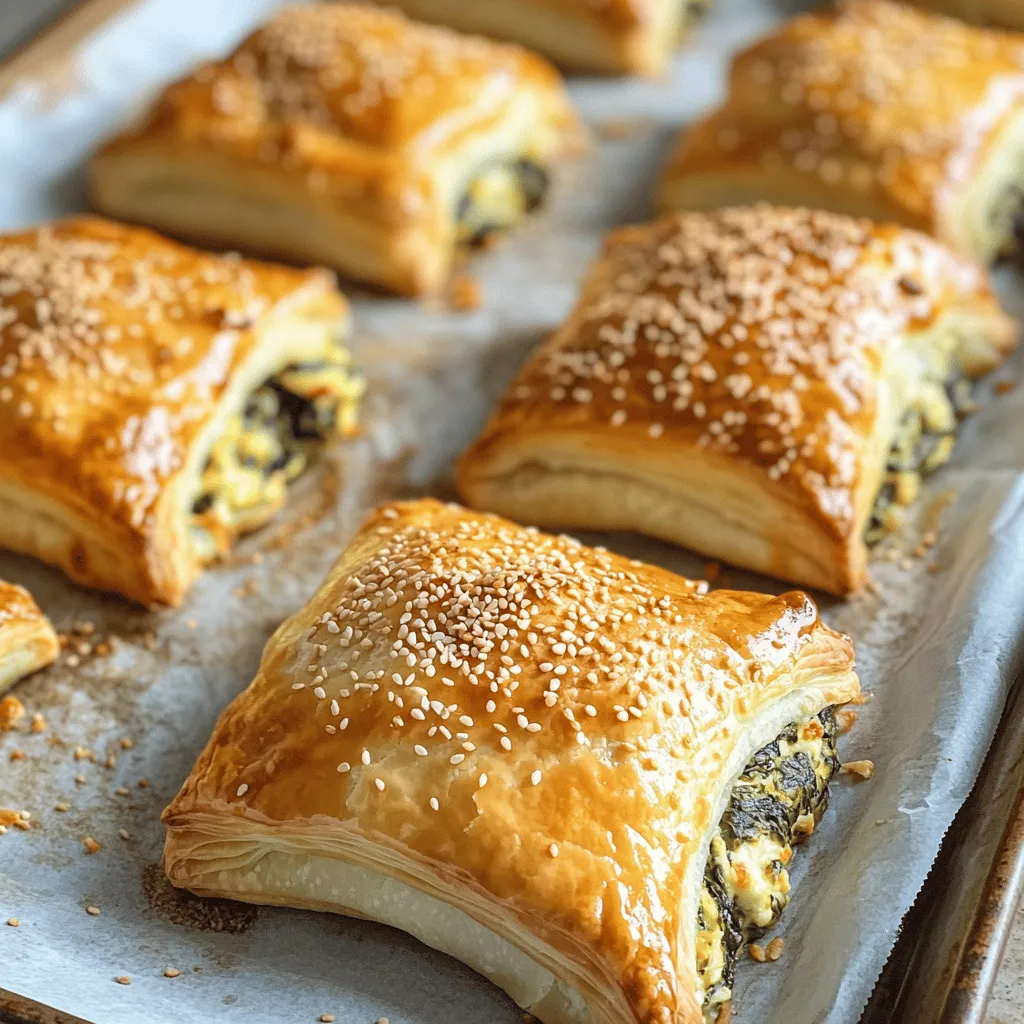Introduction
Cheese and spinach stuffed pastry is a delightful dish that has captured the hearts and palates of food lovers around the world. This savory pastry combines the creamy texture of cheese with the earthy freshness of spinach, all enveloped in a golden, flaky crust. It is a dish that can be enjoyed as an appetizer, a main course, or even a snack, making it perfect for a variety of occasions—from elegant dinner parties to casual family gatherings. The allure of cheese and spinach together lies not only in their complementary flavors but also in their nutritional benefits, making this dish both indulgent and wholesome.
The combination of cheese and spinach has a rich history in culinary traditions across many cultures. From Greek spanakopita to Italian ricotta and spinach ravioli, this pairing has been celebrated for centuries. The versatility of these two ingredients allows for countless variations and adaptations, catering to different tastes and dietary preferences. Whether you’re a cheese aficionado or a spinach enthusiast, there’s no denying that cheese and spinach stuffed pastry is an inviting dish that resonates with many.
Homemade pastries often evoke a sense of nostalgia and warmth, bringing back memories of family kitchens filled with the aroma of freshly baked goods. The joy of cooking, particularly when it comes to crafting pastries from scratch, is an experience that allows for creativity and personal expression. While store-bought options are convenient, making your own cheese and spinach stuffed pastry can be incredibly rewarding. It not only allows you to control the quality of ingredients but also gives you the opportunity to customize flavors to your liking.
The Versatility of Puff Pastry
At the heart of this cheese and spinach stuffed pastry is puff pastry—a culinary marvel known for its light and flaky texture. Puff pastry is made by layering dough and butter, which, when baked, expands to create delicate, airy layers. This pastry type is incredibly versatile and can be used in a variety of dishes, from sweet tarts to savory pies, making it a staple in many kitchens.
One of the primary benefits of using store-bought puff pastry is convenience. It saves time and effort, allowing you to focus on preparing the filling and baking. High-quality frozen puff pastry is readily available in most grocery stores, making it an accessible option for home cooks. When working with puff pastry, it’s essential to keep it chilled until you’re ready to use it, as warmth can cause it to become sticky and lose its flaky texture.
Here are some tips for working with puff pastry effectively:
1. Thaw Properly: If using frozen puff pastry, allow it to thaw in the refrigerator overnight or for a few hours at room temperature. Avoid leaving it out for too long, as it can become too soft to handle.
2. Keep It Cold: Cold pastry is easier to work with. If it starts to get warm, place it back in the fridge for a few minutes.
3. Roll Gently: When rolling out puff pastry, use a light touch to avoid pressing down too hard, which can inhibit the layers from rising.
4. Prevent Soggy Bottoms: To achieve a crispy bottom, consider pre-baking the pastry for a few minutes before adding the filling.
5. Seal Well: Ensure that the edges are well-sealed to prevent any filling from leaking during baking.
By mastering puff pastry, you open the door to countless culinary creations, and this cheese and spinach stuffed pastry is just one of the many delicious possibilities.
Ingredients Breakdown
To create the perfect cheese and spinach stuffed pastry, it’s crucial to understand the role of each ingredient. This dish typically requires a few essential components, each contributing to the overall flavor and texture.
Puff Pastry
Puff pastry is the foundation of this dish. There are various types of puff pastry available, including all-butter varieties that offer rich flavor and flakiness. Store-bought puff pastry is typically found in the freezer section of grocery stores. When selecting puff pastry, look for high-quality brands that use real butter for the best results.
Storage: Unused puff pastry can be stored in the freezer for up to a month. It’s best to keep it wrapped tightly to prevent freezer burn. Once thawed, it should be used within a few days.
Fresh Spinach
Fresh spinach is a key ingredient that adds nutrition, color, and flavor to this dish. Spinach is packed with vitamins A, C, and K, as well as iron and calcium, making it a powerhouse of nutrition. When preparing your cheese and spinach stuffed pastry, using fresh spinach is highly recommended for its vibrant taste and texture.
Alternatives: If fresh spinach is not available, you can also use frozen spinach. However, be sure to thaw and drain it thoroughly to remove excess moisture, which can make the filling soggy.
Cheese Varieties
The choice of cheese can significantly impact the flavor profile of your stuffed pastry. Here are some popular options:
- Ricotta: This creamy cheese adds richness and a slightly sweet flavor, making it a fantastic base for the filling. Its texture blends well with spinach, resulting in a smooth mixture.
- Mozzarella: Known for its gooey texture when melted, mozzarella can provide a delightful stretch to each bite of your pastry. It adds a mild flavor that complements the spinach.
- Feta: For a tangy kick, consider adding crumbled feta cheese. Its distinct flavor contrasts beautifully with the mildness of ricotta and mozzarella, elevating the overall taste of the dish.
Combining these cheeses can enhance the flavor complexity and create a deliciously creamy filling.
Garlic and Olive Oil
Garlic and olive oil play a vital role in flavor development for the filling. Sautéing garlic in olive oil releases its aromatic oils and infuses the spinach with a savory essence. Olive oil not only adds flavor but also helps in achieving the right texture for sautéing vegetables.
Nutmeg
Nutmeg is a subtle yet impactful addition to the filling. Just a pinch can enhance the overall flavor of the cheese and spinach mixture, giving it a warm, aromatic quality. Nutmeg is often used in creamy dishes, and its unique flavor complements the richness of the cheese beautifully.
Preparation Steps
Now that you have an understanding of the ingredients, it’s time to dive into the preparation of your cheese and spinach stuffed pastry. This step-by-step guide will help you create a delicious filling that will elevate your pastry to new heights.
Step 1: Preparing the Filling
1. Sauté Garlic: Start by heating a tablespoon of olive oil in a skillet over medium heat. Add minced garlic and sauté for about 30 seconds until fragrant, being careful not to burn it.
2. Add Spinach: Next, add the fresh spinach to the skillet. You may need to add it in batches, as it will wilt down significantly. Stir the spinach occasionally until it is fully wilted and bright green, usually taking about 3-4 minutes.
3. Season: Once the spinach is wilted, season it with salt, pepper, and a pinch of nutmeg. Stir to combine and remove from heat. Allow the mixture to cool slightly.
4. Combine with Cheese: In a mixing bowl, combine the sautéed spinach and garlic with ricotta, mozzarella, and feta cheese (if using). Mix well until all ingredients are evenly incorporated. Taste the mixture and adjust seasoning as needed.
5. Chill the Filling: For best results, refrigerate the filling for about 15-20 minutes. This makes it easier to handle when filling the pastry.
By following these preparation steps, you’ll create a flavorful filling that perfectly complements the flaky pastry. In the next section, we will explore how to assemble and bake your cheese and spinach stuffed pastry, ensuring that it turns out beautifully golden and delicious. Stay tuned for the continuation of this delightful recipe!

Combining Cheeses: Achieving the Right Texture and Consistency
When making cheese and spinach stuffed pastries, selecting the right combination of cheeses is key to achieving a creamy, flavorful filling. A blend of ricotta cheese, feta, and mozzarella is ideal. Ricotta provides a light, fluffy texture, while feta adds a tangy kick, and mozzarella contributes to the gooeyness that makes each bite delightful. Aim for a consistency that is spreadable but not too runny, as this will ensure your filling stays inside the pastry during baking.
To create the perfect cheese mixture, start by placing your ricotta cheese in a mixing bowl. Crumble in the feta cheese, ensuring it breaks down into smaller pieces for even distribution. Next, shred the mozzarella and add it to the bowl. Season the mixture with salt, pepper, and a pinch of nutmeg for added flavor. If you prefer a more herbaceous note, consider incorporating fresh herbs such as dill or parsley, which pair beautifully with spinach.
Instructions for Handling Puff Pastry
Puff pastry is a delicate dough that requires careful handling. Begin by ensuring that your puff pastry is thawed properly; this typically takes about 30 minutes at room temperature, or you can leave it in the refrigerator overnight. Once thawed, lightly flour your work surface to prevent sticking.
Unroll the pastry gently, taking care not to stretch it too much. If the pastry feels too soft or sticky, place it back in the refrigerator for about 10 minutes to firm up. When you’re ready to work with it, cut the sheet into squares or rectangles, depending on your preferred size for the pastries. A 4-inch square is a common size for individual servings, but you can adjust this based on how large you want your stuffed pastries to be.
Tips for Rolling and Cutting the Pastry
Rolling and cutting puff pastry can be straightforward with the right technique. If you prefer thinner pastries, use a rolling pin to gently roll out the pastry to about 1/8 inch thick. Be careful not to overwork the dough, as this can reduce its ability to puff during baking.
When cutting the pastry, use a sharp knife or a pizza cutter for clean edges. If you want to add a decorative touch, consider using a fluted pastry wheel. Make sure to keep the edges as even as possible, as uneven edges can lead to uneven baking.
Techniques for Sealing the Pastry Pockets Effectively
Proper sealing is essential to keep your filling from leaking out during baking. Once you’ve placed a spoonful of your cheese and spinach mixture onto the center of each pastry square, fold the pastry over to create a triangle or rectangle. Press down on the edges to seal, ensuring there are no air pockets.
For an extra secure seal, you can use a fork to crimp the edges, which also adds a charming decorative element. If desired, brush the edges with a bit of water or beaten egg before sealing; this will help the pastry stick together better.
Baking Your Stuffed Pastries
Preheating the Oven: Why It’s Crucial
Before you bake your stuffed pastries, preheating the oven is a crucial step that should not be overlooked. This ensures that the pastries begin cooking immediately when placed inside, resulting in a better rise and a crispier crust. Set your oven to 400°F (200°C) and allow it to fully preheat—typically around 15 to 20 minutes.
The Role of the Egg Wash in Achieving a Golden Finish
To achieve that beautiful golden-brown finish, make an egg wash by whisking one egg with a tablespoon of water or milk. This wash not only enhances the color but also contributes to a glossy appearance that elevates the visual appeal of your pastries. Using a pastry brush, lightly coat the tops of each pastry before baking, taking care not to let the wash drip down the sides.
Understanding Baking Times and Temperatures for Optimal Results
Baking times can vary based on the size of your pastries and your oven’s accuracy, but generally, stuffed pastries take about 20 to 25 minutes to bake. Keep an eye on them towards the end of the baking time; you’re looking for a deep golden color and a puffy appearance. If you’re baking multiple trays, rotate them halfway through to ensure even baking.
Serving Suggestions
Ideas for Dipping Sauces and Sides That Complement the Pastry
These cheese and spinach stuffed pastries are delightful on their own, but they can be elevated with the right accompaniments. Consider serving them with a tangy yogurt sauce, made by mixing plain yogurt with lemon juice, garlic, and fresh herbs. Alternatively, a marinara sauce can add a comforting touch, providing a classic pairing that resonates with many.
For sides, a fresh garden salad with a light vinaigrette can offer a refreshing contrast to the rich pastries. Roasted vegetables, such as asparagus or bell peppers, also complement the dish beautifully and add color to your plate.
Creative Ways to Present Stuffed Pastries for Gatherings and Parties
Presentation can make all the difference at gatherings. Arrange your stuffed pastries on a large platter, garnished with fresh herbs or a sprinkle of paprika for an eye-catching display. You can also serve them in individual portions, placing each pastry in a small paper muffin cup to create a charming, bite-sized treat.
Consider creating a themed platter by including various dips and accompaniments, allowing guests to mix and match flavors. This approach not only enhances the dining experience but also encourages interaction among guests.
Pairing Suggestions with Beverages (Wines, Teas, etc.)
When it comes to beverage pairings, consider serving white wines like Sauvignon Blanc or a light Pinot Grigio, which complement the creaminess of the cheeses and the freshness of the spinach. For a non-alcoholic option, a refreshing iced herbal tea or sparkling water with lemon is a delightful choice that cleanses the palate between bites.
Nutritional Information
Overview of the Nutritional Content Per Serving
Each cheese and spinach stuffed pastry offers a balanced nutrition profile, making them a satisfying option for any meal. On average, one pastry contains approximately 250 calories, with 12 grams of protein, 15 grams of fat, and 20 grams of carbohydrates. The exact nutritional content will depend on the specific ingredients and portion sizes used.
Health Benefits of Spinach and the Balance of Cheeses
Spinach is a nutritional powerhouse, rich in iron, vitamins A and C, and antioxidants. It contributes to overall health, supporting immune function and skin health. The combination of cheeses not only enhances flavor but also provides a good source of calcium and protein, making these pastries a wholesome choice.
Considerations for Dietary Restrictions (Gluten-Free Alternatives, Vegan Options)
For those with dietary restrictions, gluten-free puff pastry is available in many grocery stores, allowing you to enjoy this recipe without the gluten. Additionally, you can create a vegan version by using plant-based cheeses or tofu in place of traditional cheeses. Ensure that your puff pastry is also labeled as vegan, as some varieties contain dairy.
Conclusion
Cheese and spinach stuffed pastries are a versatile and crowd-pleasing dish that can easily be made at home. With their flaky, buttery crust and rich, flavorful filling, these pastries are perfect for any occasion—from casual family dinners to elegant gatherings. The ease of preparation allows even novice cooks to create an impressive dish that is sure to wow guests.
We encourage you to try making these stuffed pastries and experiment with different fillings and flavors to suit your taste. Whether you stick to the classic cheese and spinach combination or explore alternatives, the possibilities are endless. Don’t forget to share your experiences and variations with others, as this recipe is perfect for inspiring creativity in the kitchen. Enjoy your culinary adventure!


